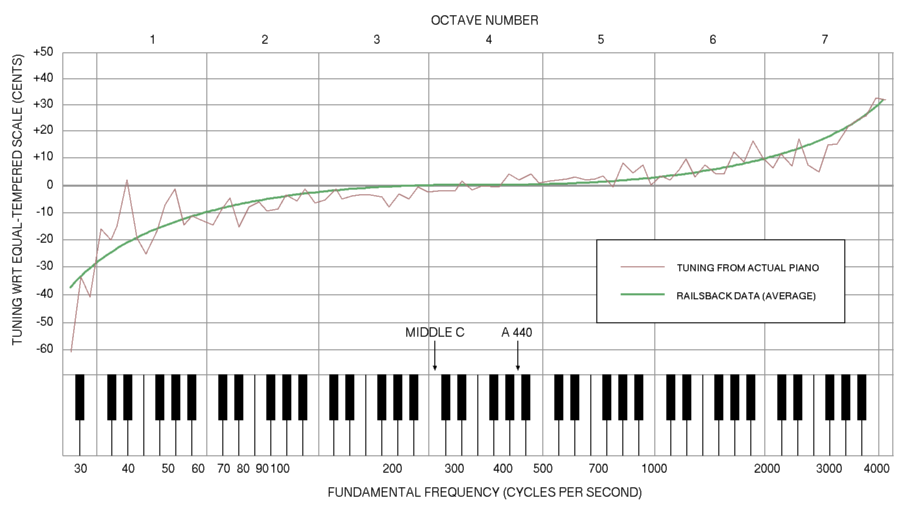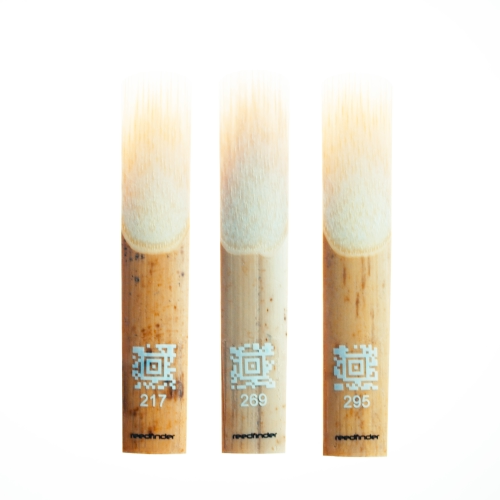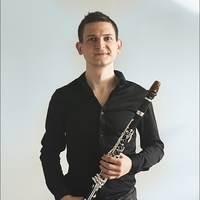Intonation of Clarinet with other Instruments
What are the difficulties when woodwinds play together with other types of instruments?
If notes are played together on the same instrument, it is relatively easy to match the sund and pitch with the same timbre. However, when different instruments do not match, it is often more difficult to identify which instrument sounds higher or lower because timbre has a very large influence on the perception of pitch.
For example the clarinet blends better with other instruments in the registers, where the timbre is more similar. It harmonises well with the cello in the chalumeau register, with the bassoon in the middle register, and with the flute playing an octave lower.[1]
Tuning with piano
The piano is an instrument that is commonly used in clarinet lessons and plays a crucial role in chamber music as an accompanying instrument. As described in this article, when playing on melody instruments, it is mainly the notes of the harmonic overtone system that are heard. However, there are factors that influence whether harmonic or inharmonic overtones are present. With stringed instruments, this can depend on the length, composition and thickness of the strings. The thicker or shorter a string is, the less it can vibrate freely, so that in addition to harmonic overtones, inharmonic overtones also occur. As a result, these inharmonic overtones distort the harmonic overtones.
The piano is essentially evenly tuned. Its 88-note range is theoretically divided into 87 evenly tempered intervals that are exactly 100 cents apart.
In practice, however, the lower notes of the piano are much lower because of the overtones that occur, while the upper notes are much higher thanks to the distortion of the harmonic overtones. As can be seen in Figure 33, there can be a difference of up to +/- 30 cents compared to equal temperament.

Figure 33: Railsback curve 122[2]
It is important to note that the resulting tuning curve (also known as the 'Railsback Curve') follows the pitches that also sound clear to the human ear. The tuning of a professional piano tuner will approximate this curve.[3]
Since there can be significant differences in pitch between the intonation of the piano and the clarinet in the upper and lower registers, it is important to always be aware of the basic tuning issues.
Tuning with string instruments
When playing with stringed instruments, it is important to remember that, unlike the clarinet, these instruments get lower as the temperature rises. It is also important to know how a stringed instrument is tuned to the clarinet. Usually the strings (G, D, A, E) are tuned to each other according to a reference tone using the Pythagoras system. If the A string is tuned to a clear A note, it will go very well with other instruments tuned to the same pitch. In practice, however, a pure fifth is placed on top of it, so that the note E, although pure to the ear, is 2 cents higher in equal-tempered tuning.
Going down from the A string, a D is obtained, which is 2 cents lower, and a G, which is again 4 cents lower. This is important because the pitch of the empty strings is not changed during playing and is considered a reference for other notes. A practical compromise could be to tune the A string 1 cent higher. In this way, the G is shifted to -3, the D to -1, the A to 1 and the E to 3 cents, which, among other things, fits the clarinet better.
Tuning with brass instruments
Thanks to their valves, brass instruments are able to play harmonics according to the harmonic overtone system, so that they can achieve an extremely clear sound with small changes of embouchure, alternative fingerings, etc. [4] If the clarinet is played with brass instruments, the notes will probably have to be adjusted more to the just intonation.
[1] Miháltz, Gábor. A Klarinétjáték Módszertana. 2014. verfügbar auf: http://www.parlando.hu/2014/2014-2/Mihaltz-Modszertan.pdf S.82 (abgerufen am: 22.09.2021).
[2] [online] verfügbar auf: https://wiki.ubc.ca/File:Railsback2.png (abgerufen am 04.24.2022)
[3] Bryner, C. John. Stiff-string theory: Richard Feynman on piano tuning. Physics Today 62 (2009), S. 49.
see also: Giordano, Nicholas. Explaining the Railsback stretch in terms of the inharmonicity of piano tones and sensory dissonance. The Journal of the Acoustical Society of America 138 (2015), S. 2359.
[4] Long, Derle Ray. Coincidence Theory: Seeking a Perceptual Preference for Just Intonation, Equal Temperament and Pythagorean Intonation in Excerpts for Wind Instruments. Dissertation. Hattiesburg: University of Southern Mississippi, 2008. S. 1.
Do you like this article?
Thanks for your feedback

World’s #1
Reed Recommendation System
We believe every musician deserves a reed that matches their unique style and sound. Each reed is selected with cutting-edge AI and machine learning based on your playing feedback.
Should You Try the Benz-Tec Digital Reed Tester? I've tested it for you!
Check out the best clarinet jokes to brighten your day!
Struggling to hit the right notes? Your instrument might be the culprit! Learn how to fix intonation problems and stay in-tune.
Unleash the full potential of your clarinet with our exclusive care guide. Elevate your playing with tips that ensure your instrument remains in perfect condition.
Here are the top 7 picks of best applications to download for classical musicians. Tuners, Metronomes and more.
Buffet Crampon's latest innovation: the Prodige Pocket Clarinet. Is it really the best instrument for young clarinetists? Check out our review!
Discover the best clarinet mouthpieces! Check out our reviews and recommendations for Bb and Bass clarinet.
Learn the technique of circular breathing. Expert guide with step-by-step instructions and troubleshooting tips for continous breathing.
A groundbreaking innovation of Buffet Carmpon: Clarimate. This is our honest review about its innovative features and real-world performance. Is it for you?
Discover the role of clarinet ligatures in achieving optimal sound and control. Explore various ligature types, materials, and techniques to enhance your clarinet playing experience.

